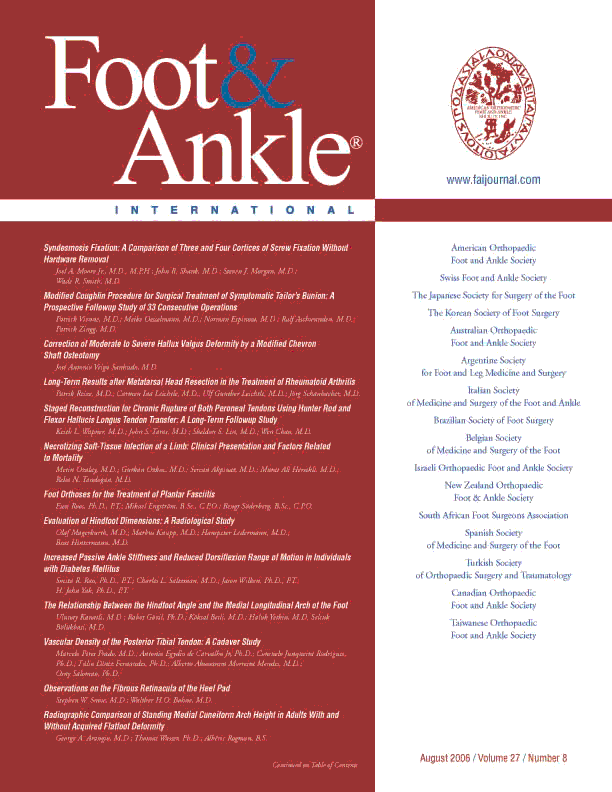
Foot & Ankle
Continuous wound infiltration does not significantly reduce pain after hallux valgus osteotomy
This report has been verified
by one or more authors of the
original publication.
Foot Ankle Int. 2018 Feb;39(2):180-188
50 patients scheduled for distal metatarsal osteotomy for hallux valgus were randomized to either continuous wound infiltration with ropivacaine or placebo infusion with saline. Patients were assessed for the primary outcome of pain scores over the first 24 hours after surgery. Secondary outcomes included pain assessment to 6 weeks after surgery, as well as rescue analgesic use, function on the American Orthopaedic Foot and Ankle Society forefoot score, range of motion of the first metatarsophalangeal joint (1st MTPJ), and patient satisfaction. Results demonstrated no statistically significant differences between groups for any of the assessed outcome measures.
Unlock the full article
Get unlimited access to OrthoEvidence with a free trial
Start TrialCritical appraisals of the latest, high-impact randomized controlled trials and systematic reviews in orthopaedics
Access to OrthoEvidence podcast content, including collaborations with the Journal of Bone and Joint Surgery, interviews with internationally recognized surgeons, and roundtable discussions on orthopaedic news and topics
Subscription to The Pulse, a twice-weekly evidence-based newsletter designed to help you make better clinical decisions
Exclusive access to original content articles, including in-house systematic reviews, and articles on health research methods and hot orthopaedic topics
Or continue reading this full article
Register Now

Subscribe to "The Pulse"
Evidence-Based Orthopaedics direct to your inbox.





































